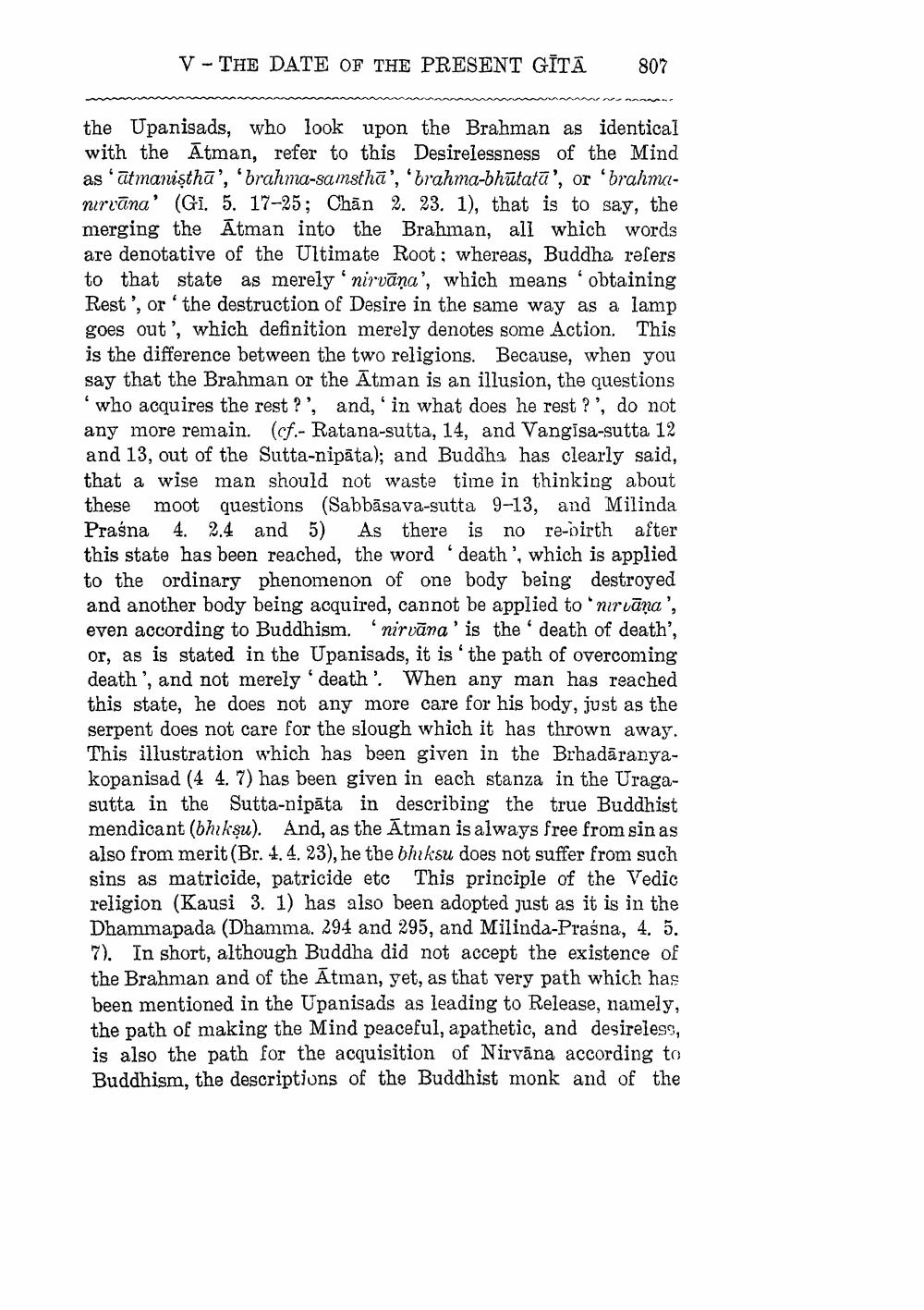________________
V - THE DATE OF THE PRESENT GĪTĀ
807
the Upanisads, who look upon the Brahman as identical with the Atman, refer to this Desirelessness of the Mind as 'ūtmanisthā', 'brahma-samsthā', 'brahma-bhūtatū', or 'brahmanirvūna' (Gi. 5. 17-25; Chān 2. 23. 1), that is to say, the merging the Atman into the Brahman, all which words are denotative of the Ultimate Root; whereas, Buddha refers to that state as merely nirvana', which means obtaining Rest', or the destruction of Desire in the same way as a lamp goes out', which definition merely denotes some Action. This is the difference between the two religions. Because, when you say that the Brahman or the Ātman is an illusion, the questions
who acquires the rest ?', and, in what does he rest ?', do not any more remain. (cf.- Ratana-sutta, 14, and Vangisa-sutta 12 and 13, out of the Sutta-nipāta); and Buddha has clearly said, that a wise man should not waste time in thinking about these moot questions (Sabbāsava-sutta 9-13, and Milinda Praśna 4. 2.4 and 5) As there is no re-birth after this state has been reached, the word 'death', which is applied to the ordinary phenomenon of one body being destroyed and another body being acquired, cannot be applied to .nirvana', even according to Buddhism. nirvana' is the death of death', or, as is stated in the Upanisads, it is the path of overcoming death', and not merely death'. When any man has reached this state, he does not any more care for his body, just as the serpent does not care for the slough which it has thrown away. This illustration which has been given in the Brhadāranyakopanisad (4 4.7) has been given in each stanza in the Uragasutta in the Sutta-nipāta in describing the true Buddhist mendicant (bhikṣu). And, as the Atman is always free from sin as also from merit (Br. 4.4. 23), he tbe bhiksu does not suffer from such sins as matricide, patricide etc This principle of the Vedic religion (Kausi 3. 1) has also been adopted just as it is in the Dhammapada (Dhamma. 294 and 295, and Milinda-Praśna, 4. 5. 7). In short, although Buddha did not accept the existence of the Brahman and of the Atman, yet, as that very path which has been mentioned in the Upanisads as leading to Release, namely, the path of making the Mind peaceful, apathetic, and desireless, is also the path for the acquisition of Nirvāna according to Buddhism, the descriptions of the Buddhist monk and of the




